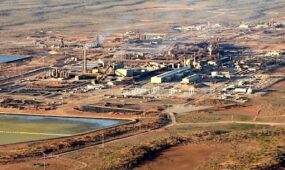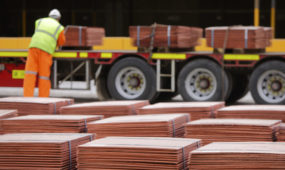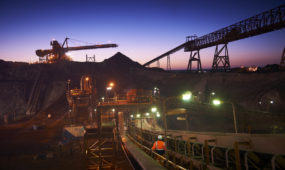Turning sunshine into liquid gold
Mining & Resources
TINY metalic-gold particles are being used to convert sunlight into fuel.

Sign up to receive notifications about new stories in this category.
Thank you for subscribing to story notifications.
The technology is being developed in South Australia to store solar energy as an alternative to battery storage.
Researchers from Flinders University and the University of Adelaide, in collaboration with a number of international institutions, have converted solar energy directly into chemical energy in the form of methane and methanol.
The process uses dynamic nano-clusters, which consist of a specific number of metallic-gold atoms.
These nano-clusters interact with gas molecules that are passed through a new conversion device, where the interaction is facilitated through exposure to UV light.
The team built a lab-scaled device in South Australia's capital Adelaide and have been testing its effectiveness using artificial ultraviolet light.
While it is still being scaled up, researchers say it has potential for industrial, commercial and domestic applications.
The US Army is so interested in using the process as a potential mobile generator, which would allow troops in the field to store energy, it is now funding the research.
Lead researcher Gunther Andersson said as the world moved toward implementing more renewable energy initiatives there was a growing need for more reliable storage.
“This is not completely a new idea, chemical energy storage, but the thing that is special in our work is that we use specific nano-clusters, which make the conversion far more efficient,” he said.
“Using a gold-based catalyst we get a about ten times more product out of it than what a contemporary catalyst would give us.
“Our lab product is working quite efficiently, at least in our research terms, and we will start to scale up the project to further test the process in the coming months.”
The technology has the potential for large-scale application that could be used to help power whole cities or just your regular home.
The dynamic shape of the nano-clusters makes them catalytic active, creating a more efficient production of chemical energy in the form of methanol or methane.
Professor Andersson said these materials were ideal substances because they were already in frequent use and easily stored.
“Obviously there are large-scale batteries, really powerful ones, but the problem is then availability. The batteries are also not quite developed for all these things yet,” Professor Andersson said.
“To get long-lasting batteries for a reasonable price is a major challenge at the moment, plus you have the problem that the chemicals you use in batteries are not very environmentally friendly.”
According to a recent report by the World Economic Forum, the cost of solar energy is now the same price or cheaper than fossil fuel in more than 30 countries and has declined at a 20 per cent compounded annual rate.
South Australia is cementing itself as a world leader in green energy as companies begin cracking the code to make renewables commercially viable.
Nearly a quarter of houses in South Australia have installed rooftop solar panels, making it one of the highest penetration rates in the world. It is also the largest producer of wind energy in Australia – the state’s 1.5GW of wind energy represents almost half of the country’s capability.
South Australia made headlines around the world when it was announced that the state – 'a place with the population of West Virginia' – had been powered by 100 per cent renewable energy for an entire working day in 2015.
Professor Andersson’s solar-storage device is an international collaboration involving researchers from Flinders University, University of Adelaide, Canterbury University, Victoria University and the University of Utah.
A research paper on the solar storage process is expected to be published next month.
South Australia’s capital Adelaide has three long-standing public universities, Flinders University, University of South Australia and the University of Adelaide, each of which are consistently rated highly in the international higher education rankings.
Jump to next article



